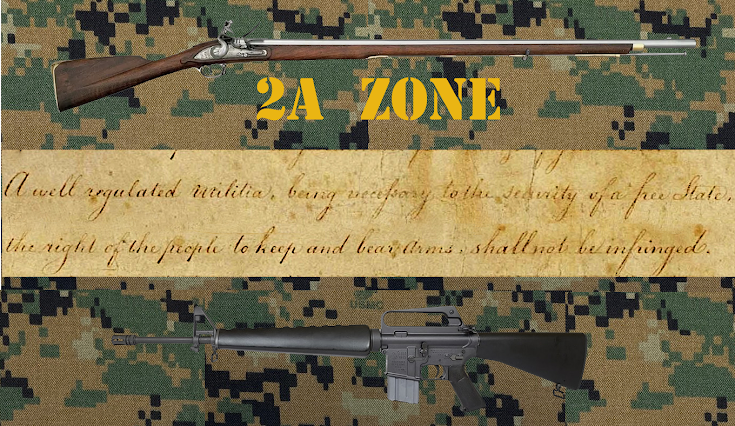1. The Bill of Rights established Principles not Policies.
The Bill of Rights establishes existential principles that govern the whole framework of our social, political and economic life. It is to politics what axioms are to geometry. The Bill of Rights sets limits on what policies the government can enact. That's what “no law” and “shall not infringe” mean. As to the principles established, it is a "No Trespassing" sign.
2. The Bill of Rights does not need to be subject to any “Balancing Test.”
In law, “balancing tests” are used to factor in competing interests in forming legislation or arriving at judicial decisions. But the Bill of Rights is not a collection of legislative policies. The balancing struck by the Framers was the Bill of Rights itself. The convention debates and the Federalist Papers show, the Framers were very atuned to the benefits and risks of each and every provision of the Bill of Rights.
3. The Second Amendment is not about Guns.
The Bill of Rights was not concerned with objects but with human behavior in the social and political context. The Second Amendment is part of a triad of rights designed to insure raw popular participation in public affairs. The Framers understood the risks of liberties and the dangers of tyranny and it was with those risks that they were concerned. They reserved three fundamental non-legislative, non-judicial, non-military popular rights:
(a) the popular right to assemble, to speak and to incite (as Justice Douglas wrote “all speech is incitement”)
(b) the right of a non-professional, popular and independent jury (as Justice Scalia wrote: “the jury serves as a circuit breaker.”)
(c) the popular right of individuals to keep and bear arms. (as Madison wrote, the right of people to be armed is the ultimate bulwark against tyranny.)
4. The Second Amendment's Purposes included Self-Defense.
At the time of ratification English and American law recognized the natural “right of having and using arms for self-preservation and defence.” (“1 William Blackstone, Commentaries on the Laws of England § 144 (1765) Of the Absolute Right of Individuals”). The existence of modern police forces does not abrogate that right because as a matter of law the police have no duty to respond and cannot be sued if they fail to. If the State cannot guarantee a person's safety it has no interest or business in taking away his or her means of self defense.
5. The Right to Keep & Bear Arms is not Dependent on Militia Service.
The argument that the right to keep and bear arms is "connected only to service in the militia" is patently absurd. Do those who advance this rationale mean to say that Framers felt it important to protect the right of recruits to be issued arms upon enlistment in a militia? Those who advance this argument have got it upside down, in England and in Colonial America, the army or the militia and policing all presupposed the existence of an armed citizenry. And it is precisely an armed citizenry that the Second Amendment insures.
6. It is not Relevant that the Framers did not “envision” Assault Rifles.
It makes no more sense to say that the Second Amendment should be revised because assault weapons were not envisioned that it would be to say that the First Amendment can be “modified” because the the Framers did not envision that propaganda power of modern mass media. What the Framers understood was that weapons of any sort can be used to inflict great injury against unarmed people, especially if taken by surprise. The Staute of Northampton, which was known to all colonists, prohibited riding with force and arms into a crowd in order to terrorize the people. At the time the statute was enacted a military style sword was a hardened steel razor blade that was capable of slicing through a neck or arm like a knife through butter. (That's why they wore steel armor.) In a crowded place it could kill several people in a matter of seconds. Did the Framers envision such a sword attached to a spinning rotary device? Who knows; but they understood the risks of armed anti-social behavior, including the killing of three or more people, which is the current definition of a so-called “mass” killing.
7. The Proposed Bills will not Address and Underlying Social Problems
“Gun violence”is an ambiguous noun-adjective that creates a rhetorical shibboleth which suggest that “guns” do harm to people. Actually guns do not do anything. They are inanimate objects. It is humans who do violence with, among other things, guns. Attributing causality to an inanimate object is to indulge in a primitive, fetishistic taboo. Cold, unemotional statistics show that most gun-related deaths are committed in crimes by minorities in their mid teens and twenties and in suicides by white men over age 65 which account for 55% to 70% of all gun related deaths. Suicides are not committed with assault rifles or high capacity magazines (unless it takes eleven rounds to blow one's brain out). The country has an elder suicide problem, and legislative efforts are better addressed at solving that problem.
8. The Legislation is a Dishonest Subterfuge that Discredits the Law
If Gun Prohibitionists want to repeal the Second Amendment, the Constitution provides them with the means to do so. The Framers made amendments difficult precisely because at issue are principles and not mere policies. Failing the ability to amend, and having their arguments rejected by the supreme judicial authority under the Constitution, the bills' proponents seek repeal by subterfuge, enacting regulatory measures that are so onerous and burdensome as to make compliance practically impossible. A parent who sets tasks or goals that are designed to insure a child's failure is guilty of abuse. So too when the power to regulate is used to destroy. Such clever subterfuges bring the law into contempt and will deepen political cynicism.
©2023, Justin Law

No comments:
Post a Comment